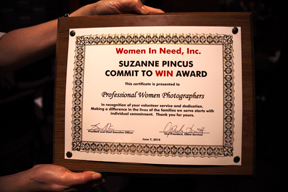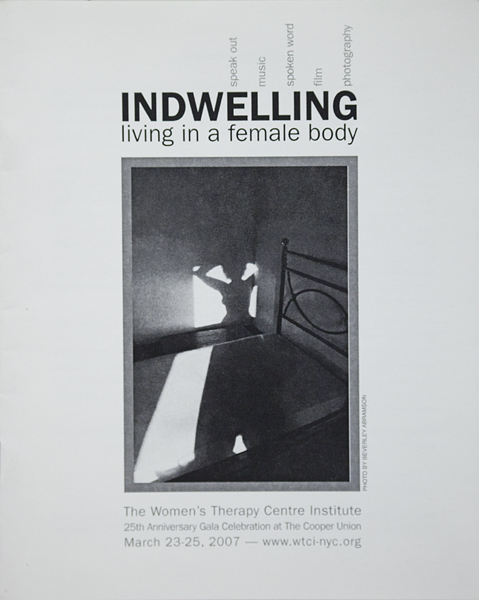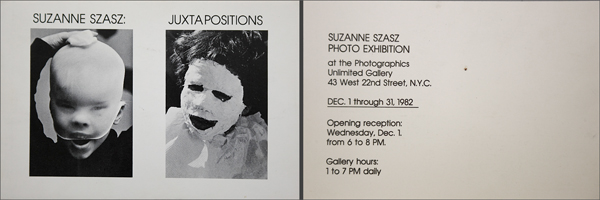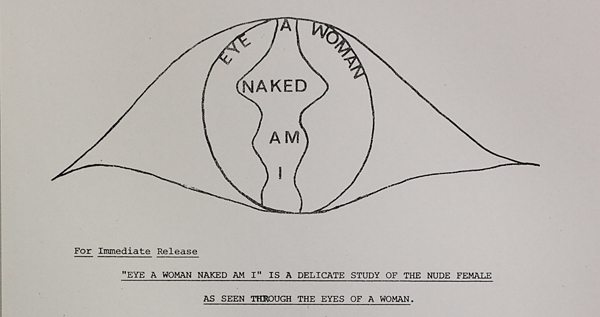30 For 30: Friends Who Overcame and Inspired

To celebrate Women’s History Month, we’re featuring items from the PWP Archives* each day on this blog. In looking back, we see not only where we started, but how far photography, women, and the world have come since 1975. From the beginning PWP has had some very good friends. The guest speaker list from the 1981-82 season includes Ruth Orkin, Arlene Gottfried, Arlene Alda, and Maggie Sherwood of the Floating Foundation of Photography. Below are Dianora Niccolini’s notes for the first PWP board and outside advisors, along with a later list of people who served. It is impressive, and includes Kathryn Abbe, Sonja Bullaty, Frances McLaughlin-Gill, Lilo Raymond, Maggie Sherwood, Erika Stone and Via Wynroth. Via Wynroth was the first [continue reading...]
30 For 30: Kudos!

To celebrate Women’s History Month, we’re featuring items from the PWP Archives* each day on this blog. In looking back, we see not only where we started, but how far photography, women, and the world have come since 1975. PWP was founded in the 1970s to encourage women photographers, but has always reached out to help other groups. In recent years it has been recognized for some of these efforts. In 2009, PWP’s Community Service Committee chaired by Andy Mars and Karen Smul began to work with the organization Women In Need (WIN). Images taken by committee members of WIN people and events were used in reports and publications, helping the nonprofit raise awareness of its mission. A mentoring program was [continue reading...]
30 For 30: Women in the World, As Themselves

To celebrate Women’s History Month, we’re featuring items from the PWP Archives* each day on this blog. In looking back, we see not only where we started, but how far photography, women, and the world have come since 1975. PWP grew out of a show of women photographers in 1975, with its structure inspired by the consciousness raising groups of Women’s Lib. So it has always been deeply involved with women’s issues, and through some recent exhibitions took a close look at what it means to be female in today’s world: The PWP exhibition A Woman’s World was held at Macy’s in Herald Square (the world’s largest store!) during Women’s History Month 2011: Images from the show were featured in [continue reading...]
30 For 30: Rapidly Multiplying Alternative Options

To celebrate Women’s History Month, we’re featuring items from the PWP Archives* each day on this blog. In looking back, we see not only where we started, but how far photography, women, and the world have come since 1975. From the very beginning photographers have pushed the technical and artistic boundaries of their medium, seeking more choices and avenues of expression. When PWP was founded in the 1970s, serious photography meant black-and-white and gelatin silver prints, but enthusiasm was growing for other ways. At the time, there was no Photoshop (the first stand alone version would launch in 1990), so people had to get creative with chemicals, brushes, and photo paints. Popular alternative processes as they were called included Polaroid [continue reading...]
30 For 30: Eye a Woman Naked

To celebrate Women’s History Month, we’re featuring items from the PWP Archives* each day on this blog. In looking back, we see not only where we started, but how far photography, women, and the world have come since 1975. In the 1970s, liberation was in the air. Women were waking up to their power, creativity and rights. They were pouring into the workforce and into professions long dominated by men–like photography. Eager to promote their own, women photographers began to organize groups and shows. Before PWP, there was was Woman Photographers of New York, founded by Dianora Niccolini, who would become PWP’s first president. Because there wasn’t a lot of gallery space devoted to photography in the 1970s, exhibitions were [continue reading...]

